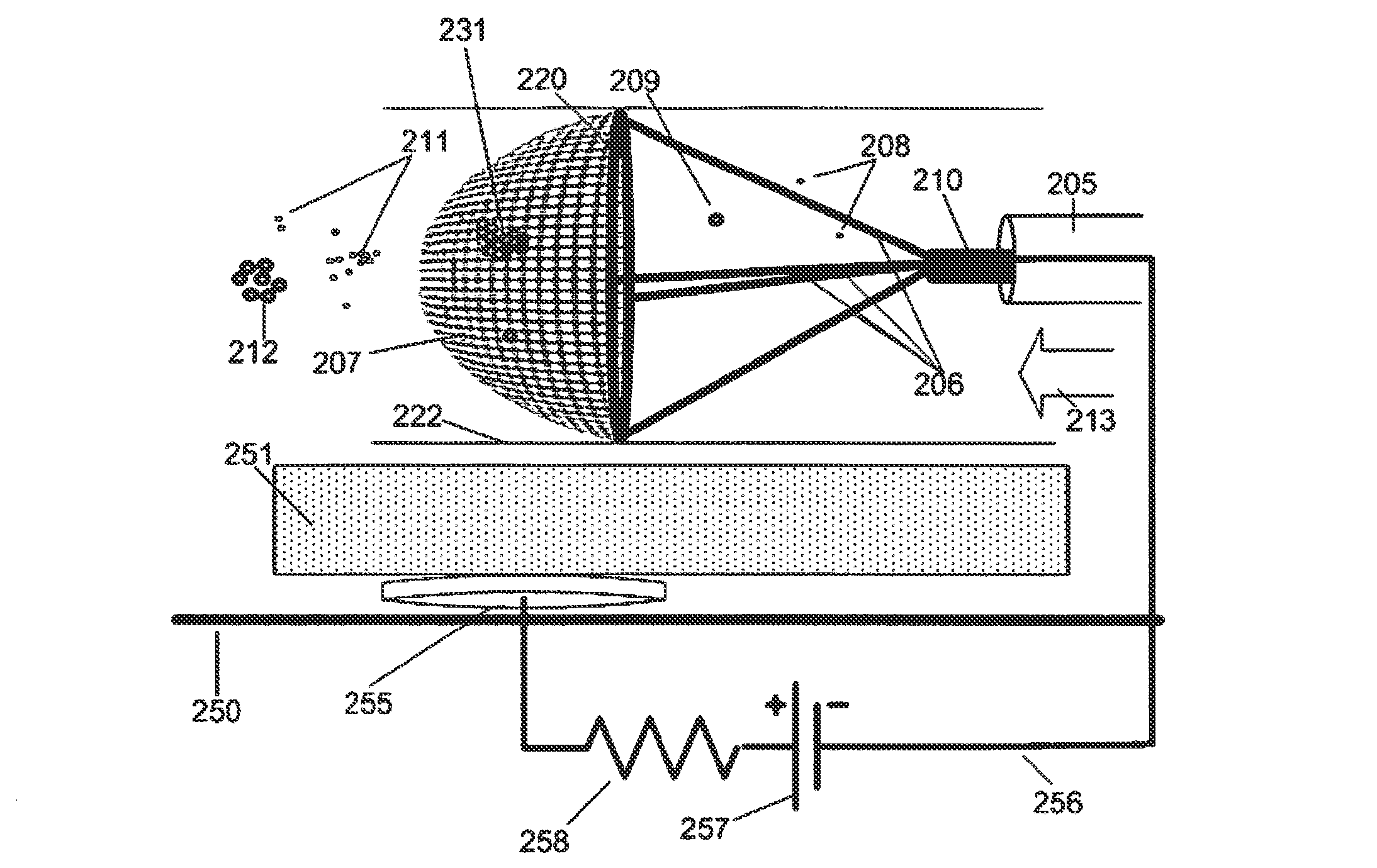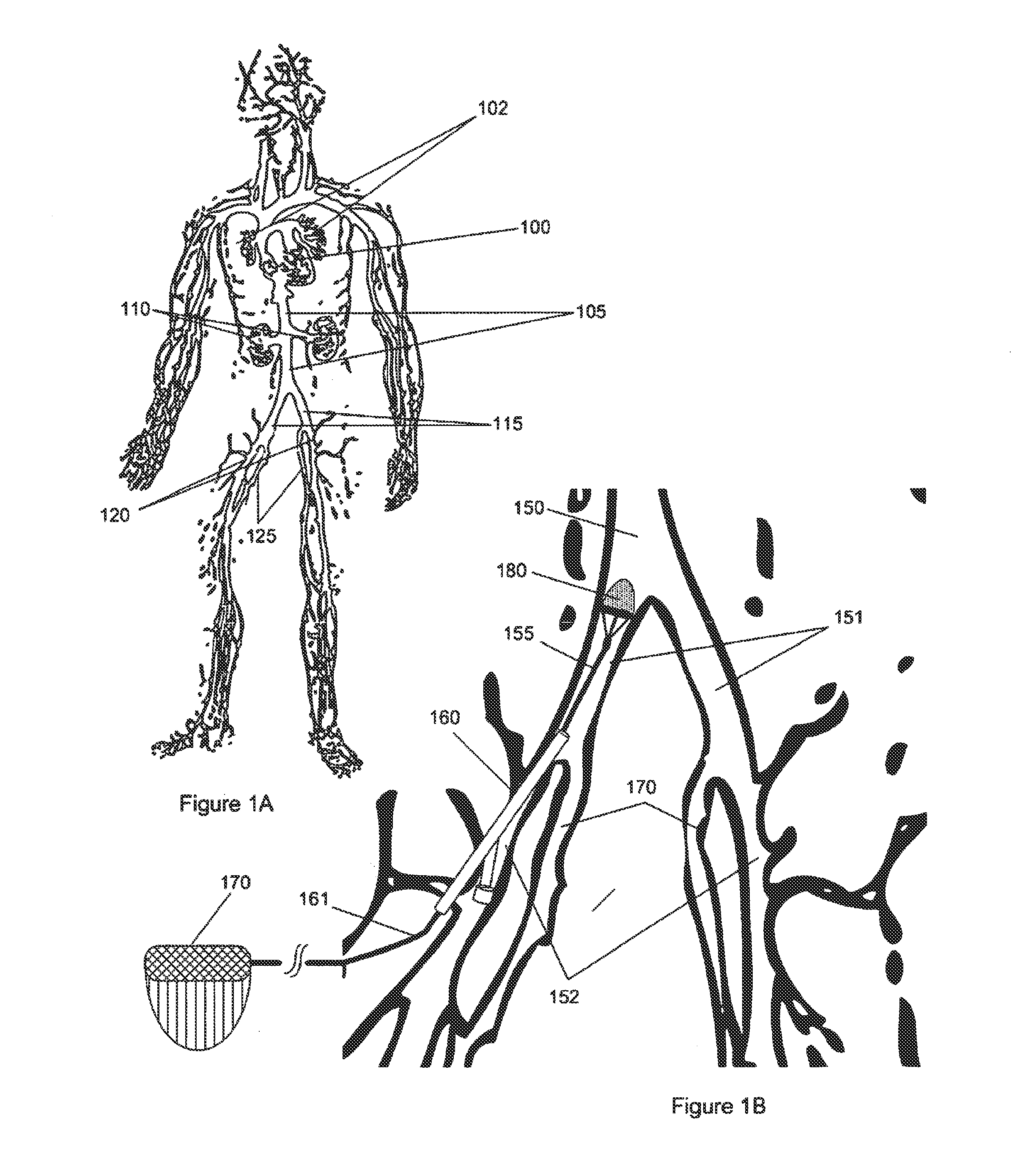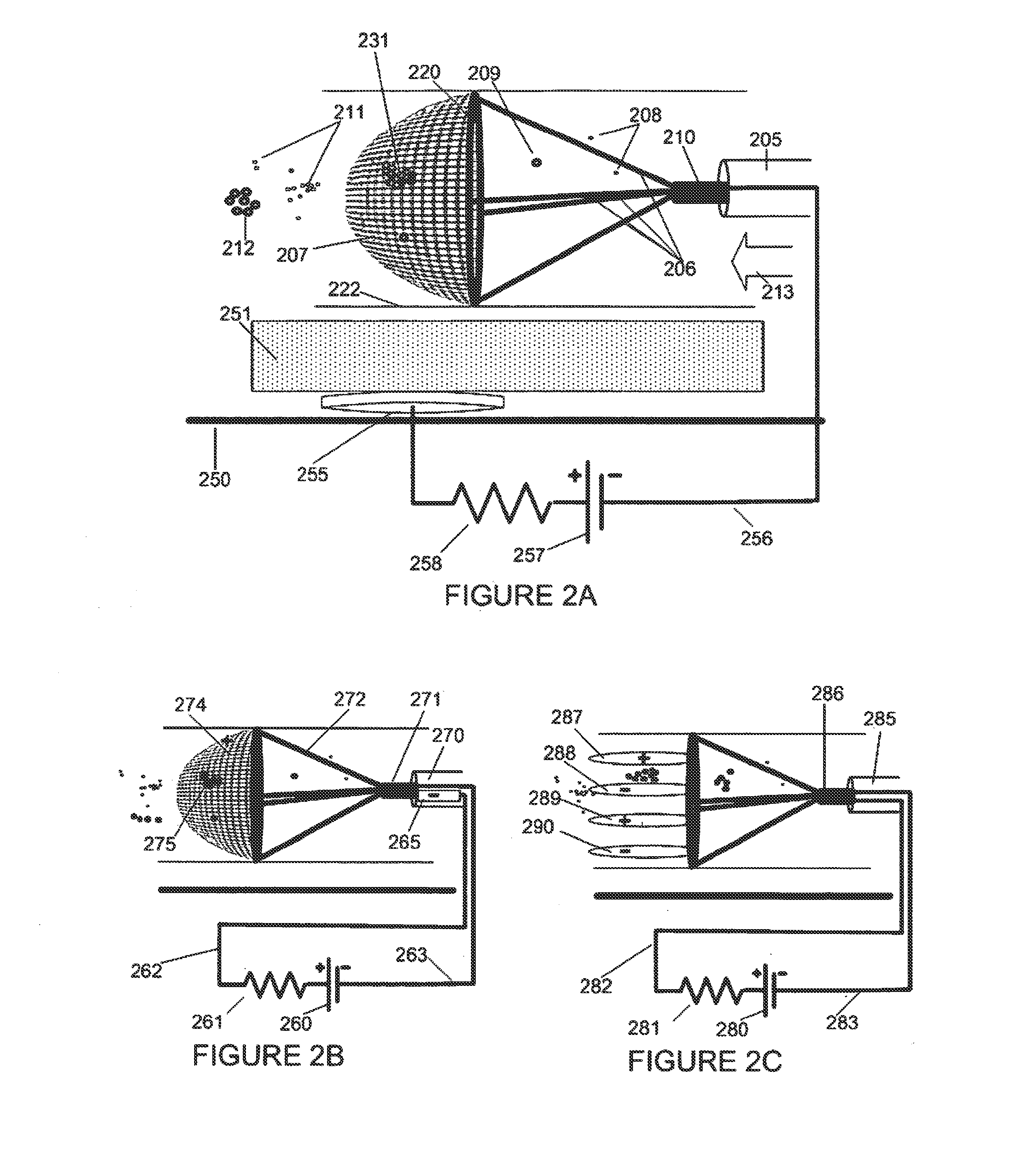Electrostatic Vascular Filters
a filter and electrostatic technology, applied in the field of medical devices, can solve the problems of fat embolism syndrome, particularly harmful ffas in the circulation, and large escaped fat particle load,
- Summary
- Abstract
- Description
- Claims
- Application Information
AI Technical Summary
Benefits of technology
Problems solved by technology
Method used
Image
Examples
Embodiment Construction
[0048]FIG. 1A illustrates the major anatomical aspects of the human venous system. Via this natural system, deoxygenated blood is returned to heart 100 via inferior vena cava 105, and oxygenated blood via pulmonary veins 102. Below renal veins 110, inferior vena cava 105 emerges from the convergence of the left and right common iliac veins 115. Femoral veins 120 emerge upstream (distally) from the common iliac veins 115, and long saphenous veins 125 also arise in this region.
[0049]As shown in FIG. 1B, each of the common iliac veins 151 arises from the confluence of the femoral veins 152 and the long saphenous veins 170. Interventional catheter 155 may be placed into this system through femoral vein 152, for example through the lumen of guide catheter 160 which may contain electrically conductive wires 161. Through the lumen, catheter 155 may advance to, for example, the common iliac artery, and may deploy filter mechanism 180. Distal end of catheter 155 may be used to deploy and to ...
PUM
 Login to View More
Login to View More Abstract
Description
Claims
Application Information
 Login to View More
Login to View More - R&D
- Intellectual Property
- Life Sciences
- Materials
- Tech Scout
- Unparalleled Data Quality
- Higher Quality Content
- 60% Fewer Hallucinations
Browse by: Latest US Patents, China's latest patents, Technical Efficacy Thesaurus, Application Domain, Technology Topic, Popular Technical Reports.
© 2025 PatSnap. All rights reserved.Legal|Privacy policy|Modern Slavery Act Transparency Statement|Sitemap|About US| Contact US: help@patsnap.com



